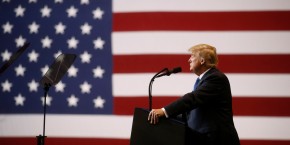
The Ibex 35 has fallen 0.72% and has lost the minimum of 9,400 points, after closing at 9,399.1 The selective is sinking towards the area of annual minimums after completing a disastrous month of August, in which it has lost about 5% (4.77%). The Turkish crisis, which has besieged BBVA, and now, the issues in Argentina has been too many negative factors for the index.
The collapse of the Argentine peso has been the cherry on top of the cake of disaster that has dragged the Spanish stock market down in recent days. This Friday, the losses have been generalized, although at least the two big banks, BBVA (-0.2%) and Santander (+ 0.14%), have been saved from the 'burn'. Although both entities are close to their annual lows area after registering strong declines in the past sessions.
On Thursday, the bank of Francisco González prolonged its suffering on the stock market after the Argentine currency reached a historical low at 41.00 pesos per dollar, a level that fell at the close to 37.90 pesos, after an increase of rates of 15 percentage points, up to 60%.
This Friday, sales were focused on DIA (-4.8%), also very exposed to the South American country. In addition, Acerinox has fallen by 3.02%, followed by Mediaset España (-2.33%). For its part, Telefónica (-1.69%), which also has interests in Argentina, has lost the psychological level of 7 euros per share after touching minimum two years.
In the main board, Abengoa led once again the declines after falling 11%, followed by Solaria (-8%), Codere (-6.9%) and Prosegur (-5.8%), also ballasted by its exposure to Argentina.
The stock markets of the Old Continent have also succumbed to the problems of the emerging economies and to the commercial tensions that re-emerge between China and the US. The French Cac 40 has lost 1.3%, while the German Dax 30 and the British Ftse 100 has lost 1%.
In the currency market, the euro depreciates by 0.56% in its cross against the dollar, up to $ 1,1605. Regarding commodities, Brent oil fell 0.5% to 77.37 dollars, while the ounce of gold advanced 0.18% to 1,207 dollars. Finally, Spain's risk premium falls slightly 0.35% to 115.90 points.
CHINA AND THE US' TRADE WAR
The falls in emerging currencies have been exacerbated by the announcement by US President Donald Trump that he plans to impose new tariffs on Chinese exports worth 200 billion dollars as soon as next week. In addition, it has threatened to leave the World Trade Organization (WTO) if the US is not treated better.
At the macroeconomic level, in Japan industrial production for July has been released and in China, the composite PMI, services and manufacturing have impressed, exceeding expectations in the month of August.
In addition, France has published its CPI data for the month of August, which stood at 0.5% per month, as forecast by analysts. On the other hand, the annual CPI was 2.5%, also in line with the forecast and one tenth below the previous month.
Meanwhile, Germany has published retail sales for the month of July, which have fallen by 0.4% compared to June and have risen by 0.8% compared to the previous month. The monthly data has been below the forecasts of analysts.
On the other hand, the year-on-year inflation rate for the euro area stood at 2% in August, one tenth less than the previous month, as a result of the lower rise in the price of energy and fresh food, according to the preliminary data published by the Community Statistical Office, Eurostat.
TECHNICAL ANALYSIS OF THE IBEX 35
"We closed the week with a cumulative fall of 2%, but the worst is not that, but the fact that we do it very close to the annual minimums, the support of 9,327 points. Most of the 'blue chips' played, "explains José María Rodríguez, analyst at Bolsamanía.
"Santander has set a new annual minimum and stands at December 2016 price levels. BBVA has not yet reached a new annual minimum, but it has accumulated a 29% drop since its annual highs. still not able to straighten the course, but the worst performer these days is Telefonica, which has marked prices below seven euros and, rebounds aside, does not already have any support until the minimum of 2016, the Brexit, at 6.66 euros, "adds this expert.
"If we end up drilling the annual minimums, the door opens for us to continue correcting towards the area of 9,000 points (bullish gap of the session of December 8, 2016) without discarding, even the area of 8,700 points, by where would pass a straight bullish directive potential that unites the lows+ numbers of 2012 and 2016 ", concludes Rodríguez.



